Review: 2013 Chevrolet Malibu Eco
Through the mid-1980s, General Motors essentially owned the midsize sedan market. This dominance was ended by the original Ford Taurus, and GM’s position sunk further with the rise of the Honda Accord and Toyota Camry to the top two spots. In recent years the Fusion has replaced the Taurus, while Nissan, Hyundai, and (for 2012) even Volkswagen have become serious contenders. For GM to reclaim one of the top spots, the Chevrolet Malibu had better be a damn good car. The model has been redesigned for 2013. Is the new car good enough? After doing my best to get some seat time in the Detroit area, I gave up my press junket cherry to Chevrolet to find out.
The Sonata gained its current position partly through striking exterior styling. The same won’t happen with the new Malibu. It’s a handsome car, especially with the LTZ’s 18-inch five-spoke alloys (the chunky overhangs appear more massive with the Eco’s 17s), and the ends of the car are distinctively Chevrolet, but the side profile has been seen many times before in various Accords and Camrys over the past 15 years. The trunk bustle was introduced on the 2002 BMW 7-Series, though it is more successfully (if still not entirely successfully) incorporated here. Chevrolet touts the Camaro-inspired tail lamps, but will many potential buyers notice or care unless the car also performs like a Camaro? Either way, the Malibu might be more attractive than most competitors but its conservative shape won’t grab the attention of potential buyers.
The best-looking car I saw in Austin? That would be a double-dubbed 1961 Cadillac Coupe de Ville:
The new Malibu’s interior is better. Though there’s nothing exciting about the instrument panel’s styling, and the strakes connecting the vents are a questionable element, it looks and feels much more upscale than those in competitors, especially the Camry and Passat. Much of the instrument panel and door panels are soft-touch surfaces suitable for a more expensive car.
Step up to the LTZ trim (not available with the eAssist powertrain, and so not offered at launch), and you can get stylish brown and black leather seats with orange piping and neon blue stitching. Sound like too much? Well, it actually works:
In the Eco, the optional leather is a relatively drab single shade, and the standard cloth is even more downscale. At night, everything is lit in ice blue. The various buttons do have a feel in keeping with the car’s price point, but they are large, logically arranged, and within reach. The Eco has MyLink standard, which provides Bluetooth smartphone integration complete with voice activation and apps for Pandora, Stitcher, and others to come.
The new Malibu is 2.7 inches wider than the current car, and rides on a wheelbase 4.5 inches shorter. These dimensional changes translate to the interior, where there’s more shoulder room but less rear legroom. The VW Passat now clearly leads the segment in the latter. The front seats are fairly comfortable, at least when fitted with four-way power lumbar (which is on the passenger side only with leather). Without the adjustable lumbar lower back support is lacking. Unlike in some recent GM cars, power recline is available for both front seats. Raise the driver seat a couple inches to clear the tall instrument panel, and the view forward isn’t too far off the segment average. The view rearward, on the other hand, could well prove a stumbling block for many potential buyers. Because of the very high trunk, the rear window is a narrow slit. And to get the drag coefficient to 0.30 (for the Eco, 0.29 for the upcoming LS with its narrower tires) the side mirrors were downsized.
Though the official rear legroom stat of 36.9 inches suggests otherwise, the back seat is just large enough for one adult male about six-feet in height to squeeze behind another. While the large cushion promises good thigh support, it’s mounted a couple inches too low to actually provide it. Compromised by the rear-mounted battery pack, trunk space and utility are only a match for hybrids. The rear seat folds, but as in the Camry Hybrid the pass through is a small slot on only one side:
Buyers for whom trunk space is a priority will strongly prefer the related conventionally-powered sedans in all cases. Interior storage is fairly generous, and includes a hidden compartment behind the display screen.
Eventually three four-cylinder engines will be offered in the new 2013 Malibu: a 182-horsepower 2.4-liter with “eAssist,” a 190-horsepower 2.5-liter, and a turbocharged 2.0-liter. At launch in early 2012, only the first will be available. Horsepower ratings for the 2.0T, like the 2.5 part of a new Ecotec engine family, haven’t yet been announced for this application. But in the Cadillac ATS it’ll churn out a not-quite-Sonata 270. “eAssist” refers to an electric motor linked by a belt to the engine that charges a small battery pack while braking then provides up to a 15-horsepower boost—on top of the engine’s 182—while accelerating. So it’s essentially GM’s “light hybrid” system from a few years ago with upgraded components (including a lithium-ion battery pack) and re-branded to lower expectations vis-à-vis full hybrids with larger battery packs and more powerful electric motors. How much more powerful? The Toyota Camry Hybrid’s motor-generator can produce 105 kW. The Malibu’s? Eleven.
To take advantage of this assist to benefit fuel economy, GM has fitted the Eco with a taller final drive ratio (2.64 vs. 3.23). Perhaps they should not have. While 190+ horsepower should be plenty to motivate the Malibu’s 3,620 pounds (about 130 were saved through Eco-specific lightweight parts), in practice the powertrain often struggles, especially up hills. While the engine is nearly silent under 3,500 rpm, above that mark a high-pitched whine suggests that too little engine has been given the task of accelerating too much car. Whatever assist is provided by the “eAssist” is far from evident. The full hybrids from Toyota, Ford, and Hyundai all feel significantly quicker. For best performance it helps to manually downshift the six-speed automatic (the only transmission likely to be offered with any of the engines), but this proves awkward. The manual shift rocker switch is on top of the shifter, so you cannot grab the shifter in a conventional manner to operate it. I improvised by using the armrest to fully support my arm, and then tapping the rocker with my free hand.
The EPA rates the Malibu Eco at 25 city, 37 highway. The trip computer reported about 25 in suburban driving with about one complete stop per mile. Out on a rural highway we occasionally observed just over 30. While the Hyundai Sonata Hybrid also struggles to match its EPA numbers, both the Ford Fusion and Toyota Camry are capable of low 40s in suburban driving. Of at least equal concern: the non-hybrid Sonata (24/35) and Camry (25/35) have EPA ratings nearly as high as the Malibu Eco’s.
The new Malibu is even more resistant to stopping than accelerating. While the regenerative braking is transparent, braking force does not build linearly, and the brakes don’t do much until quite a bit of effort has been applied. Repeatedly I had to step up my braking effort, then step it up again, as the Malibu Eco rushed towards a stopped car ahead.
The Malibu’s handling casts further doubt on its claimed 3,620-pound curb weight. Though closely related and dimensionally similar to the Buick Regal, through its steering wheel the Chevrolet feels much larger and heavier. Suspension tuning that contends for the title of softest-in-class is part of the reason. While over decent roads during casual driving the payoff is a very smooth ride, hit wavy pavement at speed and the under-damped body floats and bounds about. The suspension geometry seems sound and the car’s handling is always safe, with mushy understeer as the low limits of the Goodyear Assurance tires are approached, but there’s little sense of what’s going on where the rubber meets the road. Confidence is not inspired. I’d much rather drive a Regal or even a 2012 Camry on a challenging road. What the Malibu does do extremely well: keep outside noise outside. It’s an incredibly quiet car. Even the clatter of a Ford diesel pickup accelerating uphill with a loaded trailer the next lane over was barely audible.
While the Malibu Eco can’t match the Fusion or the Camry hybrids in terms of performance and economy, it also costs less despite having a much more upscale look and feel. The Malibu starts at $25,995. Load one up, and the sticker is $30,625. A similarly-equipped Ford Fusion Hybrid lists for $33,835, over $3,200 more. TrueDelta’s car price comparison tool indicates that in terms of features the cars are close to equal. A similarly loaded up Camry Hybrid or Sonata Hybrid splits the difference between the two: both are about $1,900 more than the Chevrolet after adjusting for feature differences. But a Sonata Limited costs about the same as the Malibu, while a Camry SE is about $2,000 less. So the Eco only seems a good value if compared against full hybrids—with which it cannot compete in terms of fuel efficiency. The Malibu 2.5, when it goes on sale next summer, will likely cost about $2,000 less (the amount GM charges for this system in the Regal).
So, the Malibu Eco isn’t terribly fuel efficient, and also certainly isn’t a driver’s car. And yet Chevrolet will likely still sell many of them (especially once the other engines arrive). Toyota’s and Volkswagen’s recent decontenting have opened up a hole in the segment. Many midsize sedan shoppers prioritize interior materials and a cushy, quiet ride above all else, and Chevrolet has done a very good job with the new Malibu’s interior and an outstanding job with noise suppression. This formula has been working with the Chevrolet Cruze and Equinox. It will likely work with the new Malibu as well.
For this review, GM paid to fly the author to Austin, TX, put him up for a night, and fed him four meals.
Michael Karesh operates TrueDelta.com, an online provider of car reliability and real-world fuel economy information.
Michael Karesh lives in West Bloomfield, Michigan, with his wife and three children. In 2003 he received a Ph.D. from the University of Chicago. While in Chicago he worked at the National Opinion Research Center, a leader in the field of survey research. For his doctoral thesis, he spent a year-and-a-half inside an automaker studying how and how well it understood consumers when developing new products. While pursuing the degree he taught consumer behavior and product development at Oakland University. Since 1999, he has contributed auto reviews to Epinions, where he is currently one of two people in charge of the autos section. Since earning the degree he has continued to care for his children (school, gymnastics, tae-kwan-do...) and write reviews for Epinions and, more recently, The Truth About Cars while developing TrueDelta, a vehicle reliability and price comparison site.
More by Michael Karesh
Latest Car Reviews
Read moreLatest Product Reviews
Read moreRecent Comments
- SPPPP I am actually a pretty big Alfa fan ... and that is why I hate this car.
- SCE to AUX They're spending billions on this venture, so I hope so.Investing during a lull in the EV market seems like a smart move - "buy low, sell high" and all that.Key for Honda will be achieving high efficiency in its EVs, something not everybody can do.
- ChristianWimmer It might be overpriced for most, but probably not for the affluent city-dwellers who these are targeted at - we have tons of them in Munich where I live so I “get it”. I just think these look so terribly cheap and weird from a design POV.
- NotMyCircusNotMyMonkeys so many people here fellating musks fat sack, or hodling the baggies for TSLA. which are you?
- Kwik_Shift_Pro4X Canadians are able to win?



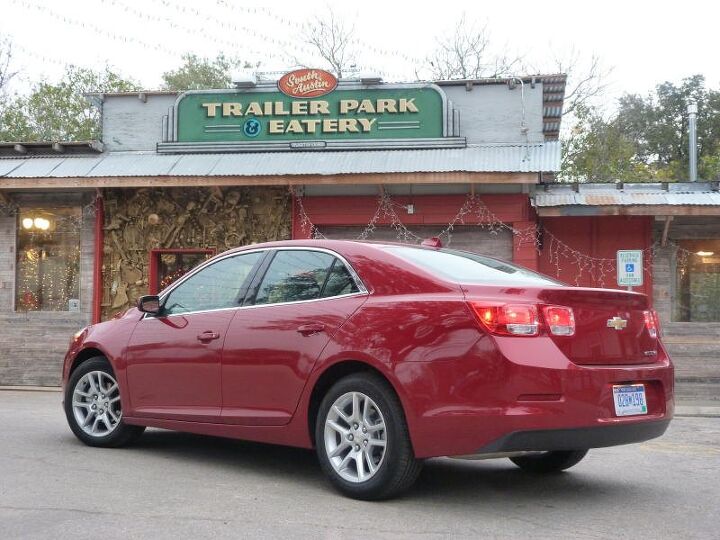




































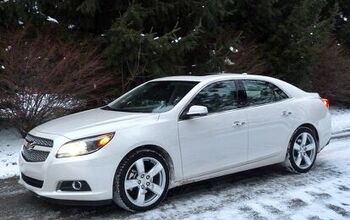

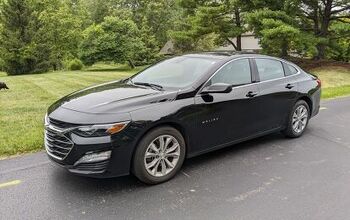
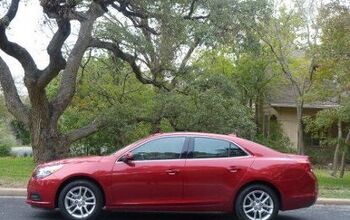
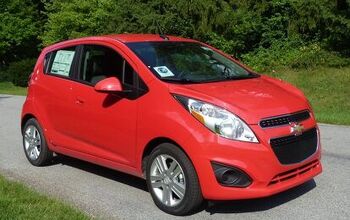










Comments
Join the conversation
Well, now at least the Malibu is probably better than the Chrysler 200. It looked really bad for the Malibu for awhile.
I drove my first Malibu 2013 today. I am not a fan of hybrids because I don't care about gas prices anymore. I'd prefer this car with a V6 or a 200HP i4. It's a very impressive car which easily upstages the Volt's tech package, but, the interior is what grabbed me. It's the most strikingly beautiful GM car I've seen yet. Considerably nicer than the CTS and XTS even.